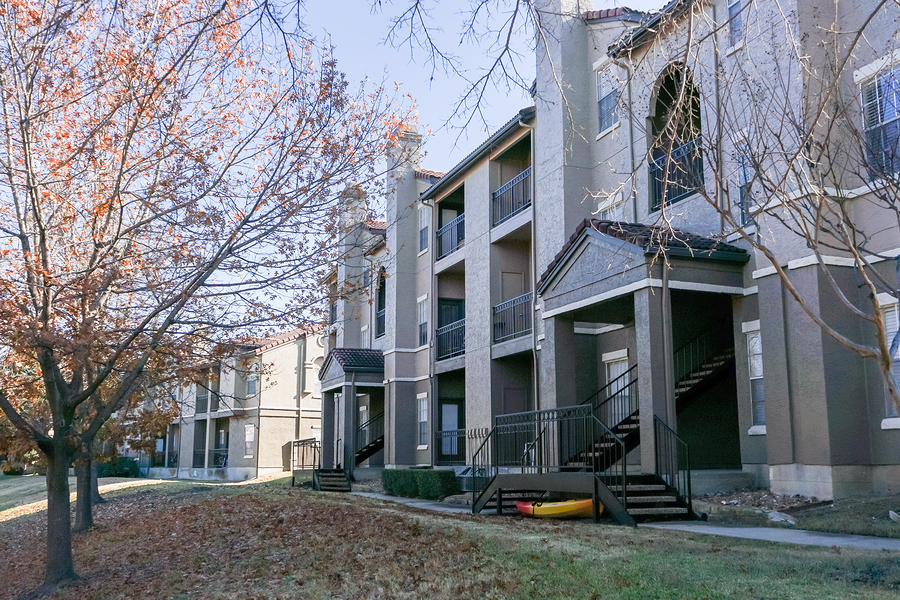When it comes to investing in multifamily properties, knowing what you’re getting yourself into is crucial to getting a good return on investment (ROI). Knowing about potential problems (and opportunities) with a prospective acquisition is key to helping you come up with an appropriate offer. That’s why spending the time on property tours before you make an offer is so important.
Why attend property tours?
As an investor engaged in property tours, your job is to spot problems and to identify opportunities. It is especially important for new investors to get out in the market and tour as many properties as possible. It’s how you build a baseline of properties for comparison purposes. For example, you’ll gain a good understanding of typical amenities, average market rents and operating expenses for a specific submarket. Priceless knowledge!
So how do you look “under the hood” of a multifamily property? What are some things to watch out for? Let’s start with the many benefits of in-person property tours.
The benefits of pre-offer property tours
- Informs negotiations. Checking the state and condition of a property can help you come up with a fair price during negotiations.
- Discover costs to address deferred maintenance. You’ll be better informed about the potential costs of maintenance tasks that have been postponed by the seller.
- Determine capital improvement planning. Allows you to come up with a more accurate long-term plan to update fixtures and systems such as fire control systems, alarm systems, HVAC equipment, parking lots, etc.
- Assess repurpose and reuse opportunities. Can you add cool amenities, update the property and offer more market sizzle to attract residents?
- Opportunity to check out tenants. Will you need to reposition residents? And is it possible to find residents that meet your personal screening criteria in that market?
- Determine seller’s motivation, degree of honesty. You won’t really know the seller’s true intentions or reasons for selling until you see the property for yourself.
The property tour
In most cases, the listing broker, or your buyer’s broker, will conduct property tours. During the tour you’ll discover that time will fly – an average tour could take as little as 20 minutes. So be sure you’re asking to see everything listed below and that your broker is giving you ample time for your tour.
Don’t be surprised if the seller and/or property manager are present for your tour. This is an excellent opportunity for you to ask casual questions about the current tenants and property operations.
Speak with everyone
When touring the property, make an effort to speak casually with tenants when possible. It’s important to note that tenants rarely know that the property is for sale, but you could certainly ask what they like about living at the building. So be respectful.
Also, speak with employees or on-site managers when possible. They can provide you with some insight into what to expect when (or if) you purchase the property.
Make sure you look at your overall surroundings, including the outside and inside of the property.
Outside
Start by scouting the neighborhood. Arrive early and get in some exercise with a 10-block walk. How does the general area look? Once at the property, start with a walk around the entire complex. Here’s what to look for:
- Check out the cars. Are they late model, in disrepair, on blocks, or parked on the lawn? If passing by during the day, are there a lot of cars? Ideally, a prospective property that is generating a successful income will have tenants at their jobs, not hanging out at home or loitering around the building.
- Look for any signs of uncleanliness and neglect. Is the trash overflowing? Are landscape and common areas being maintained, cleaned, and free of graffiti? Does the structure suffer from damage? Are there any cracks in exterior walls or foundation? Do you notice any shifting in the foundation or bricks in disrepair? Are sidewalks, railings, and steps safe for use? Does the property meet accessibility standards and requirements? Is there signage? Is the street address visible? Are windows open? No matter the season, open windows could be a sign of heating and cooling issues.
- Ask to see the roof. Does it need to be redone or has it been patched? When was the last roof work completed? Are drains and scuppers free of trash and debris?
- Check building doors. Are they propped open? This is not only a security issue, but it could be a possible sign of drug activity.
- Look for other issues. Are there any standing puddles of water or drainage issues? Are there any smells or odors noticeable around the property? Evidence of fire damage?
Inside
Don’t hesitate to spend some time touring the interior. The building could look fine on the outside, but the inside may need work. It might also present opportunities.
- At the very minimum, ask to see a residential unit of each unit type (studio/efficiency, 1, 2, 3 bed). If you end up in contract, you will want to walk and make notes on every single unit.
- Look at the entrance. Is the entrance inviting? Is the lobby and mail area clean? Are unit numbers clearly visible? Is there an entryway security system? Cameras and controlled access? Do systems meet life safety requirements? Is there proper lighting, egress, and exit signage? Is there a designated area for securely accepting package deliveries?
- Check if common areas are clean and in proper working order. Inspect property amenities and facilities like laundry and fitness areas. Check out the boiler room. Look for dated inspection notices, rust, disrepair, or safety hazards such as poorly stored flammable materials. Elevators and fire extinguishers should also have current inspection notices.
- Once inside a unit, look for signs of wear and tear. Look for cracks and stains on ceilings (always look up!). Are the windows old, floors warped? Doors and windows fit well? Do aesthetics like counters, flooring, fixtures, and hardware need to be updated?
- Check other areas. Don’t forget the back stairs and storage units.
- Look for bulletin boards and management signs. Tenant notices can be very revealing.
- Look out for any other issues. Are there signs of pests or traps? What do you hear? Is it loud? How do the common areas smell?
Valuable networking opportunity
Be cool during your property tours, even if you are not completely confident, act like you are. You do not have to say much. You do not have to make an offer on the spot. Be sure to ask questions and show a genuine interest in the property and in the people you’re meeting. Don’t forget this business is all about building good relationships!
Need help scouting multifamily properties? We can help. At Theresa Bradley-Banta Real Estate Consultancy, we offer a multifamily real estate investing course that will help you find and analyze the perfect deal. Contact us today for more info!
Learn more:
7 Property Inspection Tips for Purchasing an Apartment Complex
Multifamily Property Owners – Don’t Skip the Inspections!
Stay on Top of Apartment Trends with These Easy Tips
Latest posts by Theresa Bradley-Banta (see all)
- Multifamily Common Areas Maintenance & Management Tips - March 31, 2020
- 8 Tenant Gift Ideas That Will Boost Your Bottom Line - November 11, 2019
- Need a Package Delivery System at Your Multifamily Rental Property? - October 28, 2019



